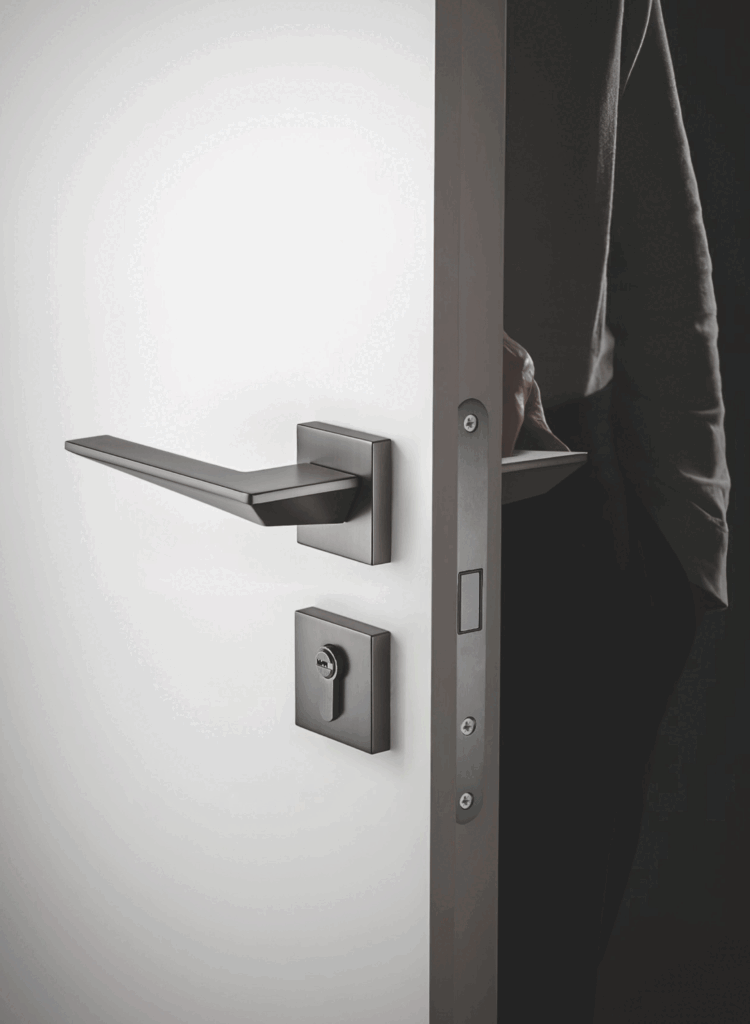Introduction
Different regions follow different standards for door hardware. Whether you are sourcing a door cylinder, mortise lock, handle, hinge, or door closer, understanding these standards is critical. Choosing the wrong one can result in installation problems, compliance issues, or costly project delays.
In this guide, we compare ANSI (American National Standards Institute) and DIN (German Institute for Standardization). We explore their role in locks, hinges, door closers, and exit devices, and explain why the right choice matters for your project.
Why ANSI and What is DIN?
- ANSI is the American National Standards Institute, which develops and oversees standards widely used in North America. These include hardware performance grades, fire safety classifications, and dimensional requirements.
- DIN is the German Institute for Standardization. Many DIN standards have been adopted across Europe, often in conjunction with EN (European Norms). DIN provides precise measurements, durability requirements, and fire-safety benchmarks.
Representative Standards
- Handles / Door Furniture — EN 1906 defines lever and knob handle performance.
- Hinges (single-axis) — EN 1935 specifies durability and testing for single-axis hinges.
- Lock Cylinders — DIN 18252 regulates Euro profile cylinders, including dimensions (17×33×10 mm).
- Mortise Locks — DIN 18251 defines lock body sizes, backsets, and compatibility.
- Locks and Latches — EN 12209 outlines mechanical lock performance.
- Door Closers — EN 1154 classifies power sizes (EN 2–6), durability, and fire resistance.
- Exit Devices & Panic Hardware — ANSI/BHMA A156.3 in the US; EN 1125 and EN 1634 in Europe; DIN 18273 for fire-rated hardware.
Key Differences Between DIN and ANSI
1. Mortise Locks
- ANSI Mortise Locks — Typically use backsets of 2-3/4” (70 mm) or 2-3/8” (60 mm). Known for robust, slightly bulkier design.
- DIN Mortise Locks — DIN 18251 specifies backsets of 55 mm / 60 mm and a standard center distance of 72 mm. At Umay, we supply both ANSI and DIN mortise locks, tailored to customer needs.
2. Hinges
- ANSI Hinges — Sized in inches (e.g., 4″ × 4″), focusing on load capacity and durability grades (Grade 1, 2, 3).
- DIN Hinges — EN 1935 includes not only performance but also installation alignment, reversibility, and fire rating. Standards like DIN 18272 and DIN 18273 are essential for fire-rated applications.
3. Door Closers
- ANSI Door Closers — ANSI A156.4 classifies closers by cycle life, closing force, and adjustability.
- DIN Door Closers — EN 1154 classifies closers based on door weight and width (EN 2–6). DIN places stronger emphasis on fire-safety, requiring automatic closing under heat exposure.
4. Exit Devices & Fire Hardware
- ANSI — Focuses on UL certification and panic hardware performance (ANSI A156.3).
- DIN / EN — Require compliance with EN 1125 (panic exit devices) and EN 1634 (fire testing). DIN 18273 applies to fire-rated door accessories.
Why These Differences Matter
- Door Prep and Lock Installation
A DIN mortise lock won’t fit an ANSI door cutout without rework. This creates risk of misalignment or insecure fitting. - Certifications and Fire Codes
North American projects demand ANSI/UL compliant hardware. European projects require DIN/EN compliance. Using the wrong standard risks failed inspections. - Project Delays and Cost Overruns
Incorrect specifications can lead to procurement errors, wasted shipments, and costly re-installation.
Umay: Creating Products by Standard
At Umay, we design and manufacture locks, handles, hinges, cylinders, peepholes, and door closers that comply with both ANSI and DIN standards. This ensures our products can be used confidently in projects across North America, Europe, and the Middle East.
We help door manufacturers, importers, and hardware distributors source the correct standard, reducing risk and ensuring smooth project delivery.
Choosing the Right Standard for Your Market
- For projects in North America, choose ANSI-compliant hardware (mortise locks, exit devices, hinges, and closers tested under BHMA/UL standards).
- For projects in Europe, the UK, and the Middle East, use DIN / EN-compliant products (DIN 18251 locks, EN 1935 hinges, EN 1154 closers, EN 1125 exit devices).
- For global projects, partner with suppliers like Umay who can provide dual-standard solutions.
By aligning your procurement with the correct standard, you avoid costly mistakes and ensure compliance with building codes and fire regulations.
👉 Want to explore more? Visit our Umay Blog for detailed guides on DIN and EN standards.
Share This Story, Choose Your Platform!

